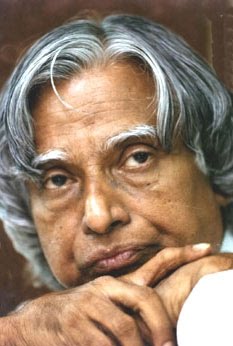| State | Dance |
| Andhra | Kuchipudi Peacock Dance of the Khonds Mango Dance of the Konda Reddis Dimsa Dance of Araku valley Gusadi Dance of Gonds Lambadi Dances Siddi Dance Tappeta Gundlu Urumulu Butta Bommalata Goravayyalu Garaga Dance Vira Natyam Kolatam Chiratala Bhajana Dappu Dance Tiger Dance Gobbi Dance Horse Dance Karuva Dance Veethi Bhagavatam |
| Arunachal | The Wancho Dances Idu Mishmi Ritual Dance Digaru Mishmi Buiya Dance Khampti Dance Ka Fifai Dance-Drama Ponung Dance Sadinuktso |
| | Husari & Bihunas Sattriya Dance Barpeta's Bhortal Nritya Dhuliya and Bhawariya Deodhani Zikirs Mohauhau or Mahkheda Apsara-Sabah |
| | Bidesia Dance Jhijhian Dance Kajari Dance Paika Dance Rajgir Dance Festival held every year in Rajgir |
| | Mussoll | Manddo | The Dulpod | Dakhnni | Kunnbi-Geet | Occupational Songs | Talgoddi Dance | Shigmo | Foogddi | Dhalo | Ovi songs |
| | Garba Modhera Dance Festival |
| Haryana | Ras Leela | Phag Dance | Daph dance | Dhamal Dance | Loor | Gugga Dance | Jhumar Dance | Ghumar Dance | Khoria Dance | Holi Dance | Gangor-Puja Dance | Sapela Dance |
| Himachal | Mala Dance | Demon Dance | Dalshone and Cholamba Dances | Nagas Kayang | Jataru Kayang | Shan and Shabu Dances | Keekali and Bhangra | Nuala | Nati | Jhoori, Gi, Swang Tegi and Rasa Dances | Khaydayat and Lamba Dances | Lahadi and Ghooghati Dances | Dand Ras and Dangi Dances |
| J&K | Kudd, Ruf Dance Bachha Nagma, also known as 'Bachha gyavaun' means 'adolescent melodious voice. Dandaras Dance, performed mostly during the time of Lori festival. |
| Karnataka | Yakshagana Religious Dances - Nandi Dhwaja, Beesu Kamsale, Pata Kunitha, Bana Devara Kunitha, Puja Kunitha, Karaga, Sedere Dance, Gorava Mela, Dollu, Bhagavanthike, Mari Kunitha, Urimaramma, Harige, Bhoota Nrutya, Naga Nrutya, Vatte Kola, Lingada Birana Kunitha, Puravanthike Secular Dances - Chit Mela, Chennu Kunitha, Maragalu Kunitha, Kolata, Alayi Hejje, Simha Nrutya |
| Kerala | KATHAKALI | MOHINIYATTAM |
| Madhya Pradesh | Gaur Dance | Muria Dance | Saila Dance | Karma Dance | Kaksar Dance | Chaitra Festival Dance | Sugga Dance | Folk dance of nomadic tribes | Matki Dance | Phulpati Dance | Grida Dance |
| | Vasudev |
| Manipur | Manipuri Lai Haraoba | Nongdai Jagoi Tribal Dances - Hansengav, Toonaga Lomna, Heng Naga Toona, Tinkoom Gueina Tonagga Lamay, Chan Lam, Lushais |
| Meghalaya | Shad Sukmynsiem | Shad Nongkrem | Doregata | Do Dru-su'a | Laho Dance |
| Mizoram | Khal Lam | Chai | Sawlakin | Chhilam |
| Nagaland | zeliang dance Nruirolians known as 'cock dance' Gethinglim or 'cricket dance' Temangnetin or the 'fly dance' |
| Orissa | Odissi | Chhau Dance | Naga Dance | Ghumra Dance |
| | Bhangra | Giddha | Sammi | Kikli | Jhumar | Karthi |
| Rajasthan | Ghoomar The Ger Jhoria is a marriage dance Neja is a musical dance game of the Meenas in Kherwara and Dungarpur |
| | Maruni Tamang Selo Enchey Chaam Khang-chen-dzod-nga Dance: The two day festival of dance performed during the worship of snowy range of Kanchanjunga Black Hat (Kali topi) Dance: On Lossoong, the Sikkimese New Year Other dances are 'Bara Singha Dance (the Stag dance) and Kankal Dance (the Skeleton Dance) and folk dances like, the Limbus celebrating a good harvest. There are some soft rhythm dances too in which women can participate. The Tamang (Dampu Dance )and Maruni dances (Nepali Dance) are such in which a couple wavering lighted tapers on their open palms participate. The Limbus perform the Dhol Dance after harvesting their paddy crop. Lepcha people also perform a group dance after harvests. The Lepcha folk dances are quite bristle and Gay. The Sikkimese dances find their roots in the traditional culture seasonal cycles of this fabled Himalayan state. |
| Tamil Nadu | Bharathanatyam | Kolattam | Kavadi | Karakam Dance | Puravai Attam | Arayar Natanam | Podikazhi Attam | Navasandhi | Kuravaik-Koothu | Kazhaikoothu | Kummi | Oyil Kummi | Bommalattam | Leather Puppet Show |
| Uttar Pradesh | Kathak finds its roots in `katha` meaning 'story'. A band of storytellers attached to temples in |
| | Chhau Dance | Tusu Parab | Jhumar | Raibense Dance | Theatre- Jatra |
| Andaman & Nicobar | Nicobari danceNicobari dance is one the most important and oldest traditional dances of Andaman & Nicobar. It is practiced by the Nicobari tribe, who live in the |
Friday, May 1, 2009
Dances in India
Subscribe to:
Post Comments (Atom)

0 comments:
Post a Comment